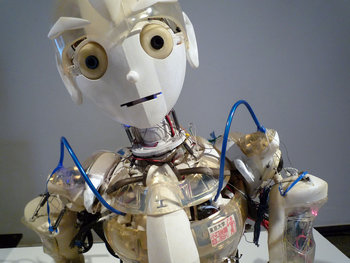
7 Dimensions
The universe exists in 3D space with time often considered a fourth dimension. The reason that a 7D hologram has so many dimensions is that the hologram is captured from a large number of positions that surround the scene or subject of the hologram.Each position is described in 3D space. Each position captures a variety of viewing directions in 2D space. Two additional parameters are captured for each direction: image intensity and time. If you add these up you get 7 parameters, known as dimensions.Analogy
A 7D hologram is like having a bunch of photographers surrounding a subject. The position of each photographer is described in 3D. The angle each photographer is pointing the camera is described in 2D. Each camera records light properties and time. The resulting parameters are: 3D position + 2D angle + time + light properties = 7D.Technical Term
The five dimensions that describe position and angle are known as a 5D Plenoptic Function.Current State
Currently, holograms based on 5D plenoptic functions are prohibitively large.Competing Technologies
A number of competing technologies exist for recording and projecting holograms. Many approaches involve creating 3D models by scanning a physical subject with lasers.| Overview: 7d Hologram | ||
Type | HologramAugmented Reality | |
Definition (1) | A method for capturing a high quality hologram using 7 dimensions. | |
Definition (2) | A method for recording a light field with the 7 parameters (Vx, Vy, Vz, θ, φ,t,λ) that describe a 5D Plenoptic Function with time and light intensity or chromacity. | |
Current State | Future / Experimental | |
Also Known As | 5D Plenoptic Function | |
Related Concepts | Augmented RealityHologramsLight Field | |

























